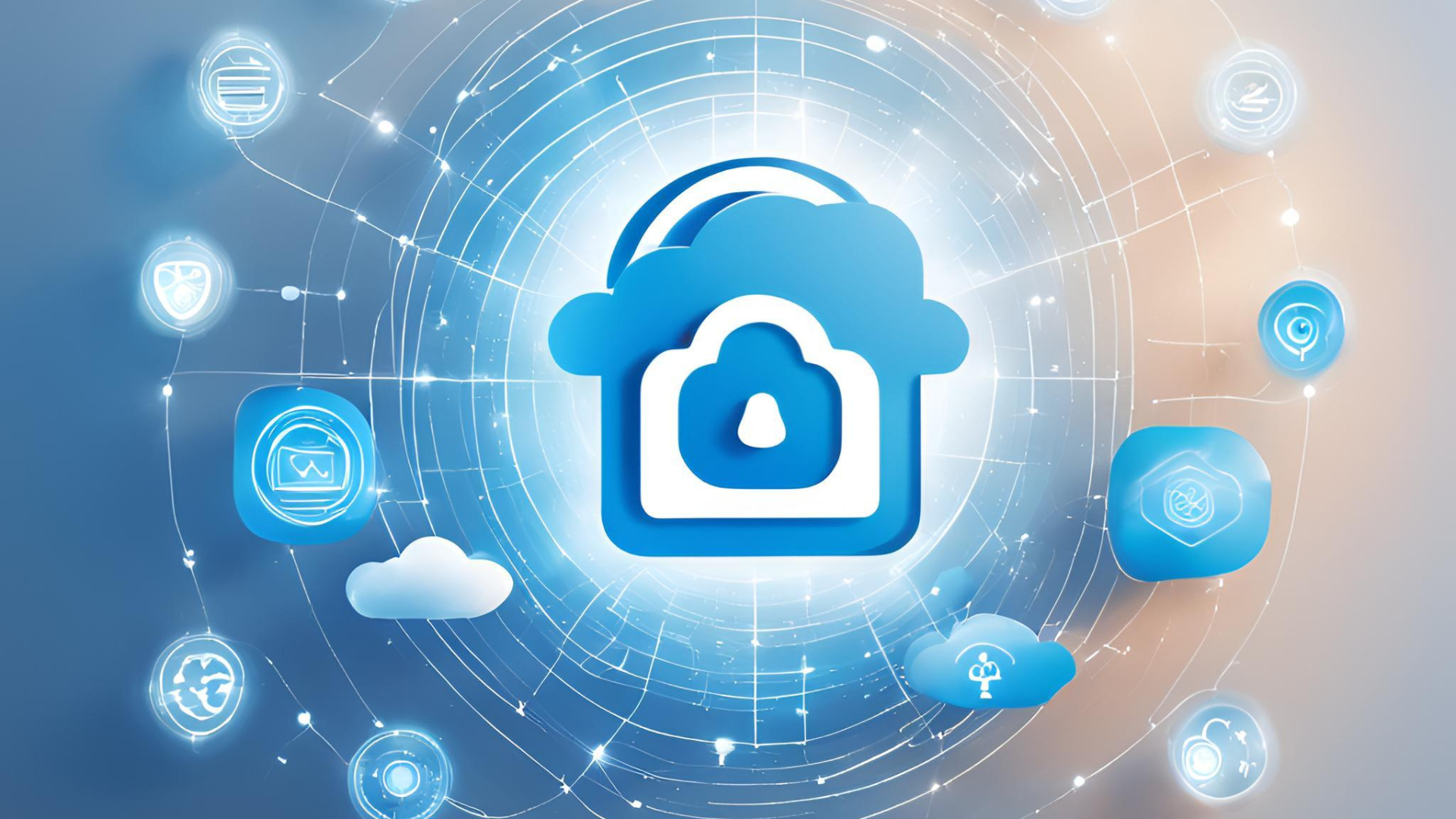
by Rebeca | Feb 25, 2025 | cloud, cybersecurity, soffid
Cloud adoption continues to grow, providing organizations with greater flexibility, scalability, and operational efficiency. However, as businesses expand across multi-cloud and hybrid environments, identity management and security challenges increase exponentially. Ensuring seamless access without compromising security and regulatory compliance has become a top priority.
Identity is the foundation of security in a cloud-first world. Our expertise and commitment enable us to offer simple, secure, and practical solutions that transform identity management into a strategic advantage rather than a barrier. With Soffid IAM, we simplify governance, reinforce security, and provide organizations with the flexibility needed to scale with confidence.
Cloud identity security requires a unified and intelligent strategy that eliminates fragmentation, automates governance, and enforces security policies without disrupting business operations. Soffid IAM allows enterprises to take full control of their cloud identity ecosystem, ensuring that every access is as secure as it is efficient.
A Smarter Approach to Cloud Identity Security
- Centralized identity management across on-premise, cloud, and hybrid environments, ensuring consistent and seamless administration.
- Secure privileged access with Privileged Access Management (PAM), reducing risks across multi-cloud infrastructures.
- Seamless integrations with AWS, Azure, Google Cloud, and enterprise applications through pre-configured connectors.
- Applied Zero Trust with least-privilege principles, continuous authentication, and adaptive security measures to prevent unauthorized access.
- Simplified compliance, aligned with regulations such as GDPR, NIS2, and ISO 27001 through automated audits and continuous monitoring.
Future-Proofing Identity Security
Security should drive digital transformation, not slow it down. Traditional IAM solutions struggle to meet the needs of cloud-first enterprises, often leading to inefficiencies and security gaps.
At Soffid IAM, we simplify identity management without compromising security or business operations. Our mission is clear: to protect, optimize, and enable growth in cloud-first environments.
Discover how Soffid IAM is redefining cloud identity security today and helping enterprises scale with confidence.

by Rebeca | Feb 18, 2025 | cybersecurity, soffid
Governments and public entities manage an increasing volume of digital identities, from employees and providers to citizens. Digital transformation has optimized processes, but it has also expanded the attack surface, exposing sensitive data and increasing the need for rigorous access control. Cybersecurity in the public sector is not just about protection—it is about trust, efficiency, and regulatory compliance.
Public administrations must ensure that access to critical systems is secure and traceable without disrupting daily operations. Managing multiple identities across fragmented environments, complying with regulations such as eIDAS, GDPR, and ENS, and ensuring interoperability between agencies are ongoing challenges. The lack of visibility into who has access to what information can become a significant security risk.
Soffid IAM empowers public entities to take control of their digital identity with a flexible and scalable solution. The platform centralizes identity management, eliminating redundancies and enhancing security with adaptive multi-factor authentication. Automated identity governance reduces administrative burden, ensuring that permissions follow the principle of least privilege, while Privileged Access Management (PAM) secures high-privilege accounts, minimizing the risk of unauthorized access.
Various public administrations have already implemented Soffid’s Citizen IAM to efficiently manage provider, employee, and citizen identities in a secure and regulated environment. Designed to meet the specific requirements of the public sector, Soffid IAM drives digital transformation for government agencies, ensuring compliance and reliable access management.
Digital identity in the public sector must evolve alongside societal demands and technological advancements.
Soffid IAM provides the security and flexibility needed to manage identities in an ever-changing environment.
Discover how Soffid IAM is redefining identity management in the public sector.

by Rebeca | Feb 11, 2025 | cybersecurity, soffid
In the ever-evolving landscape of digital security, managing identities effectively is no longer a luxury—it’s a necessity. Organizations face increasing complexity in access control, regulatory compliance, and cyber resilience. At Soffid IAM, we believe identity governance should be powerful yet simple, robust yet flexible, and secure yet user-friendly. That’s why our approach is clear:
Identity made simple… security made smarter.
Simplifying Identity Management Without Compromising Security
Identity management should not slow down operations or create unnecessary roadblocks for businesses. Many organizations struggle with fragmented identity solutions, disconnected platforms, and manual processes that increase risks rather than mitigating them. Soffid IAM eliminates these inefficiencies by providing:
- A unified identity platform that integrates Identity Governance (IGA), Privileged Access Management (PAM), and Access Management in a modular and scalable way, tailored to specific business needs.
- Automation that reduces complexity, managing identity lifecycles efficiently while maintaining security and compliance.
- User-friendly tools that enable administrators to enforce security policies without unnecessary complexity.
Security That Works Smarter, Not Harder
Cyber threats are evolving at an unprecedented pace. Traditional perimeter-based security is no longer enough—organizations need identity-first security that actively adapts to new risks. Soffid IAM delivers:
- Zero Trust principles that ensure only the right identities have access at the right time, minimizing security blind spots.
- Privileged Access Management (PAM) to protect sensitive data and prevent insider threats.
- Advanced identity analytics that provide real-time insights into access behaviors, helping organizations detect and respond to risks before they escalate.
- Multi-factor authentication (MFA) and adaptive security measures that strengthen identity protection while ensuring seamless user experience.
A Scalable, Flexible Solution for Every Organization
Not all businesses have the same identity management needs. While some require a fully converged IAM solution, others may need specific modules that integrate seamlessly with their existing security framework. Soffid IAM provides:
- Flexible deployment options—on-premise, cloud, or hybrid—allowing organizations to choose the best approach for their infrastructure.
- Seamless integration with existing applications and identity providers, ensuring continuity and adaptability.
- Scalability to grow with your business, whether managing thousands or millions of identities across multiple regions and systems.
The Future of Identity Management Starts Here
In today’s security landscape, identity should be an enabler, not an obstacle. Soffid IAM provides a streamlined, intelligent approach to identity security, helping organizations protect their most valuable digital assets without adding complexity.
Secure, simple, and built for the future. That’s Soffid IAM.
Discover how we can help your organization simplify identity management while strengthening security.
Let’s talk.

by Rebeca | Feb 4, 2025 | cybersecurity, News, soffid
In today’s digital landscape, security and identity management are global challenges that require localized solutions. At Soffid IAM, we have always believed that cybersecurity knows no borders—and 2024 has proven it.
This year, we successfully expanded into key emerging markets, strengthening our presence in South Africa, Chile, Mexico, the USA, or Colombia through strategic projects or global partnerships. Our unique combination of adaptability, regulatory compliance, and simplicity has allowed us to break barriers and deliver advanced solutions tailored to the specific needs of each region.
Entering New Markets with Impact
Expanding into new territories goes beyond entering a different economy; it means understanding local regulations, industry demands, and customer expectations. In Latin America, we have empowered financial institutions to operate securely and efficiently; in Africa, we have strengthened public sector organizations’ ability to protect digital identities; and globally, we have transformed identity governance in the education sector and beyond.
Soffid IAM offers scalable and flexible solutions that meet the highest security standards while adapting to the specific needs of each organization.
Strategic Partnerships: Driving Our Expansion
Global expansion is only possible with the right partners. In 2024, we have collaborated with leading technology providers, including Hubsec, FallAndCatch, Pretorian, ISC, CentricData, Dexcall, MKTY, or Abast. These partnerships ensure that our solutions integrate seamlessly into existing infrastructures, meeting regional compliance frameworks. This approach has not only facilitated our entry into new markets but also solidified Soffid as a trusted identity management provider worldwide.
Why Do Companies Choose Soffid IAM?
Because we offer unique advantages:
🔹 An IAM platform that can integrate IGA, PAM, and Access Management into a unified and scalable solution based on needs.
🔹 Regulatory compliance aligned with local or global cybersecurity frameworks.
🔹 Flexible deployment options—on-premise, cloud, or hybrid—adapted to regional IT ecosystems and each client’s specific needs.
🔹 Seamless integrations with enterprise applications or existing identity providers.
And because at Soffid, we simplify complexity without compromising security—a priority valued by all, without exception.
The Road Ahead
Our mission is clear: to protect digital identities, mitigate risks, and simplify identity governance in a world where security cannot be optional. With a global vision and strategic partnerships, we are leading the shift toward simpler and more effective security.
Soffid IAM: Simplifying Security, Transforming the Future.
Want to discover how we can help? Let’s talk.

by Rebeca | Jan 28, 2025 | Noticias, soffid
2024 has been a year of transformation and achievement for Soffid IAM. In a world that demands advanced solutions to protect and manage identities, we have responded with innovation, growth, and an unwavering commitment to excellence.
The results speak for themselves:
- 234% growth in sales, reflecting the trust of businesses and institutions seeking security and simplicity.
- 40% increase in revenue, strengthening our position as a leading force in the industry.
- More than 2.5 million new identities managed in the last quarter, expanding our mission to secure the most critical digital ecosystems.
These milestones are not just numbers; they are a testament to our vision of turning challenges into solutions and building technology that inspires confidence worldwide.
Unprecedented Growth
The 234% increase in sales achieved in 2024 is not just a quantitative success—it is the result of a strategy focused on delivering real value. Our customers choose us not only for what we do but for how we do it: offering solutions that combine cutting-edge technology with a deep understanding of their unique challenges.
A Strong Financial Performance
The 40% revenue growth reinforces our commitment to sustainability and impact. These results are a direct outcome of building trust-based relationships and delivering measurable outcomes, positioning Soffid IAM as a strategic partner for organizations in key sectors.
2.5 Million New Identities Secured
Each new identity managed represents a step forward in our mission to create a safer and more efficient digital world. Closing the year’s last quarter with more than 2.5 million additional identities, we have proven to be an essential solution for organizations seeking robustness, scalability, and simplicity in their critical operations.
Strategic Alliances Driving Impact
In 2024, we strengthened our partnerships with key institutions such as:
- Instituto General de la Administración del Estado (IGAE)
- Government of the Region of Murcia (CARM)
- National University of Colombia, implementing Soffid for Education.
These projects reflect our ability to adapt to the specific needs of each sector, offering tailored solutions that foster trust and deliver sustainable results.
Expanding Our Global Presence
Our footprint in North America, Latin America, Central Africa, and South Africa proves that security knows no borders. Every new market represents an opportunity to bring our technology where it is most needed, reinforcing our position as a global leader in identity management.
Innovation Driving Transformation
Innovation has been at the core of our advancements in 2024:
- Soffid Identity Analytics redefines how organizations analyze and manage critical data.
- Soffid Desktop PAM sets a new standard in privileged access control.
- The pre-announcement of Soffid 4 anticipates a new generation of solutions designed to address the most complex challenges in an ever-evolving digital environment.
These innovations not only solve today’s problems—they prepare our customers to lead the future.
The Power of Our Partnerships
Our strategic partner network has been instrumental in achieving these milestones. Thanks to their support and collaboration, we have built an ecosystem that blends cutting-edge technology with a localized, customer-centric approach, delivering solutions that truly make a difference.
2025: Building a Safer Future Together
At Soffid IAM, challenges do not hold us back—they inspire us. We look ahead to 2025 with the certainty that our mission to protect, simplify, and transform identity management will continue to set new standards in security.
To all who have placed their trust in us, we reaffirm—year after year—our commitment to leading with vision, innovation, and boldness.
The future belongs to us because we are building it together. 🚀






